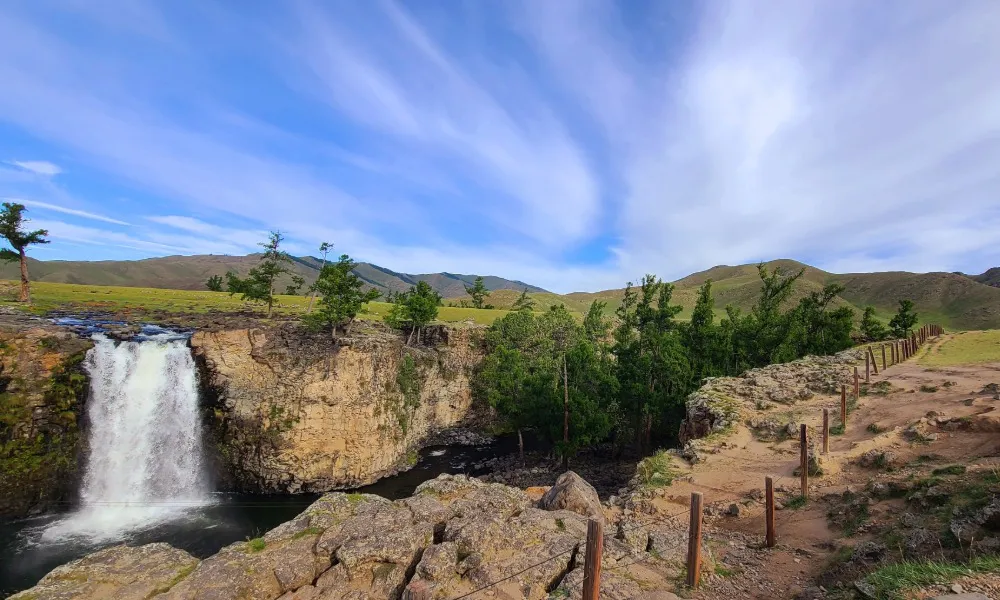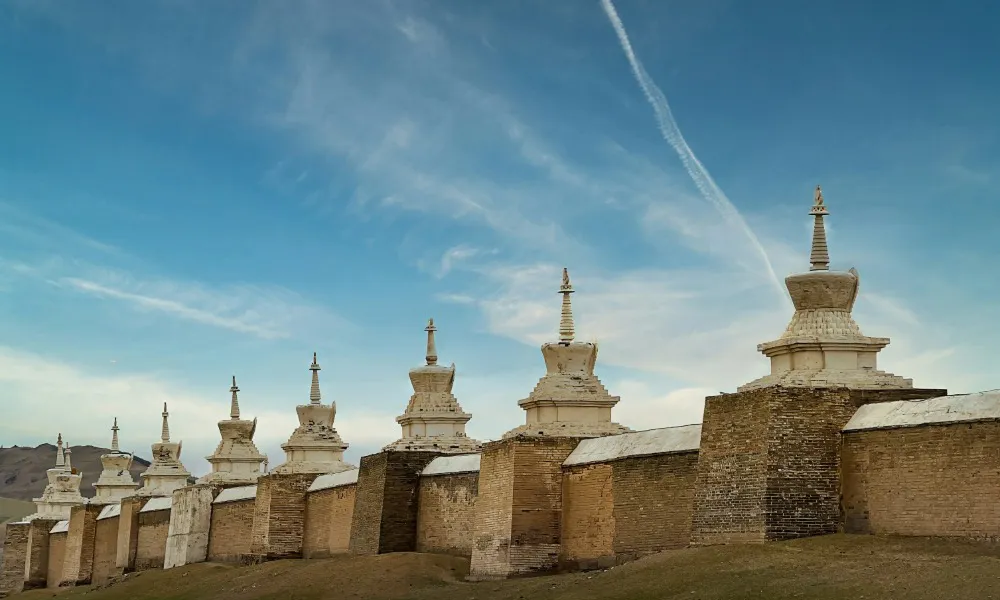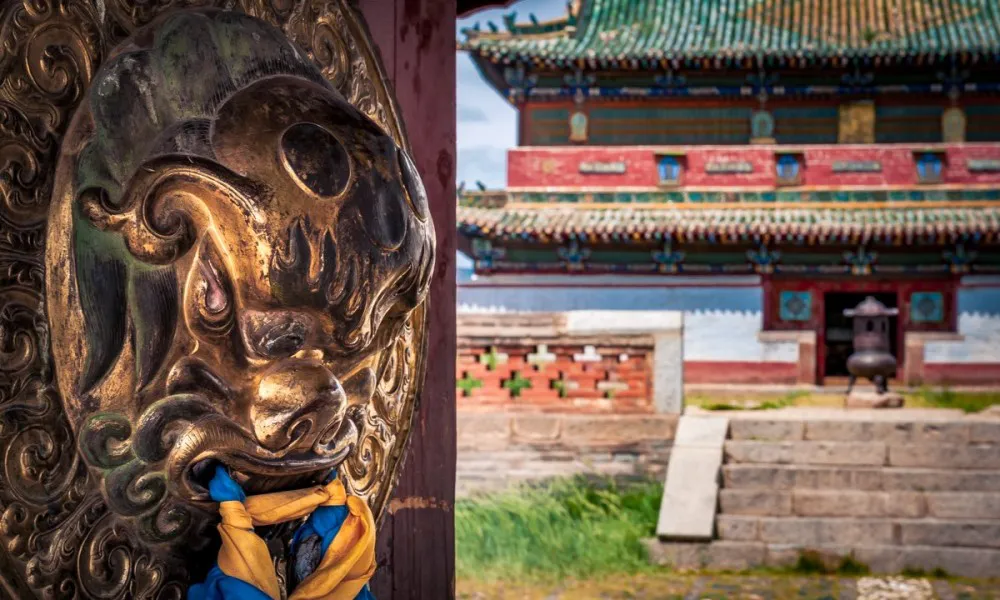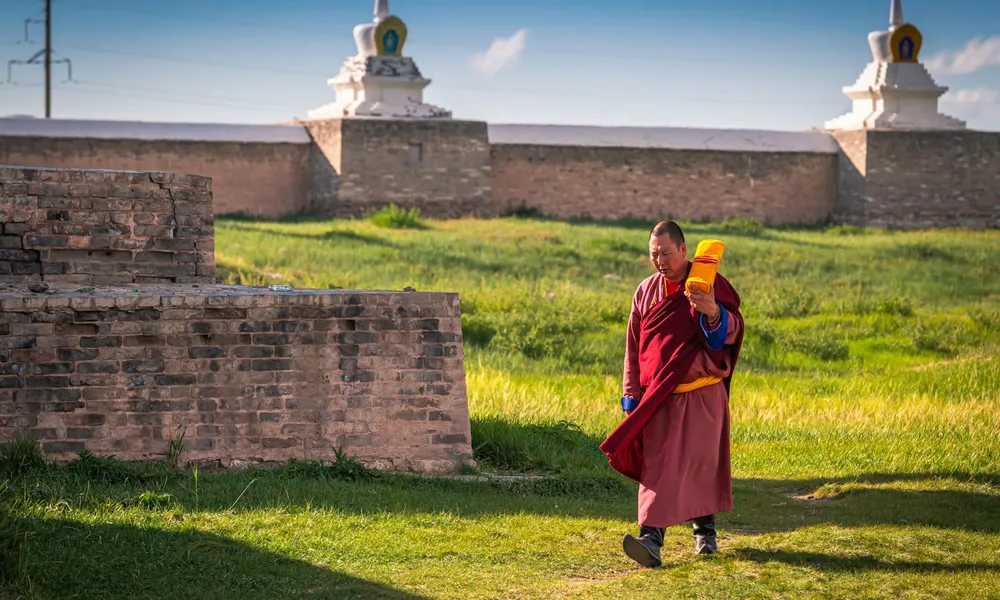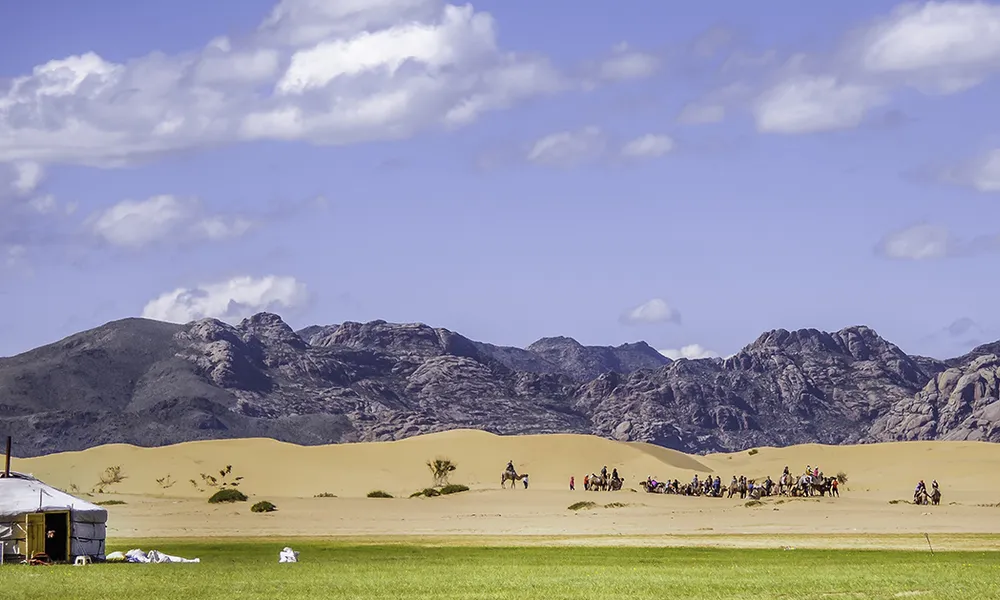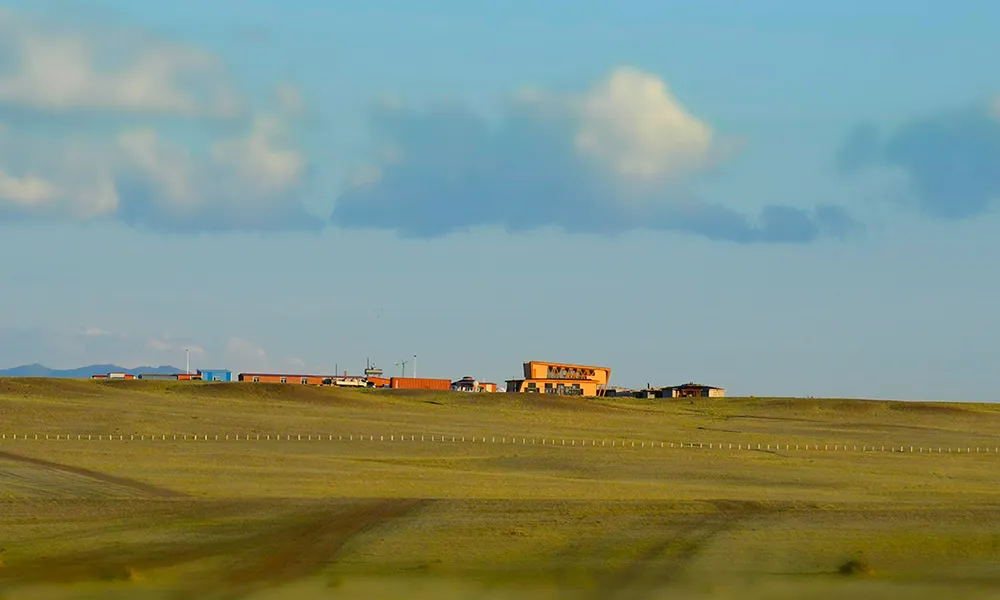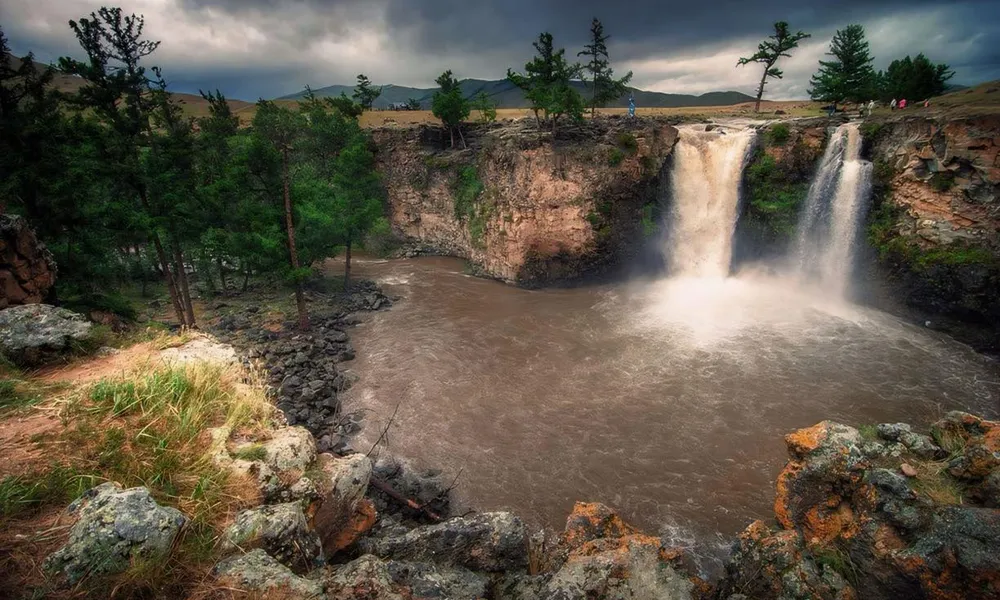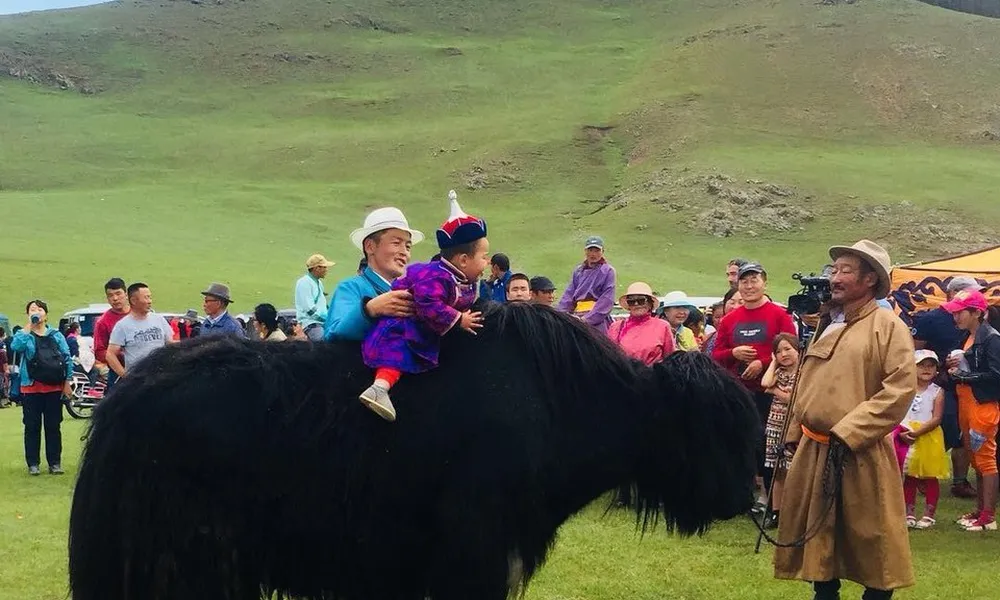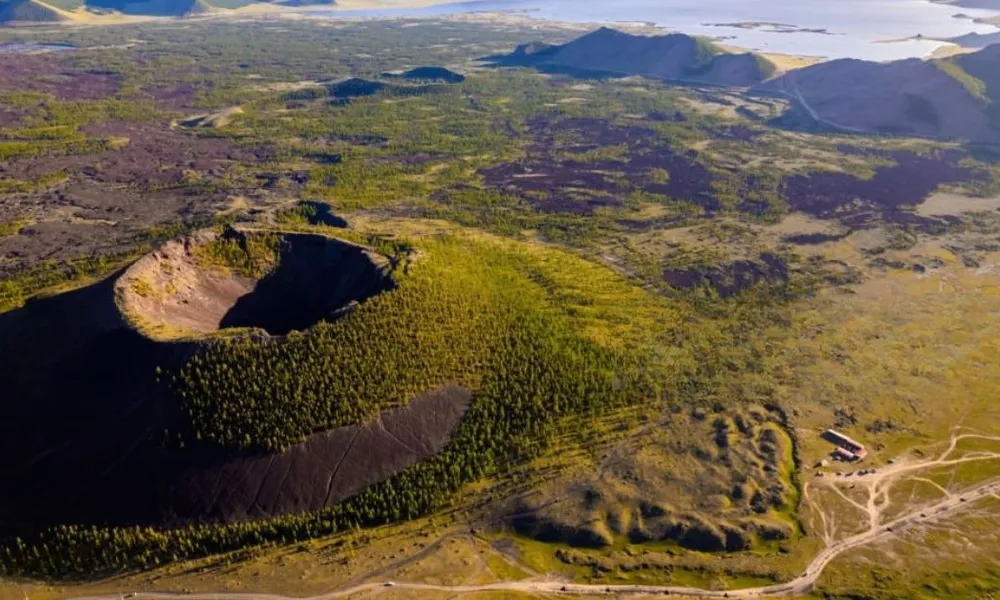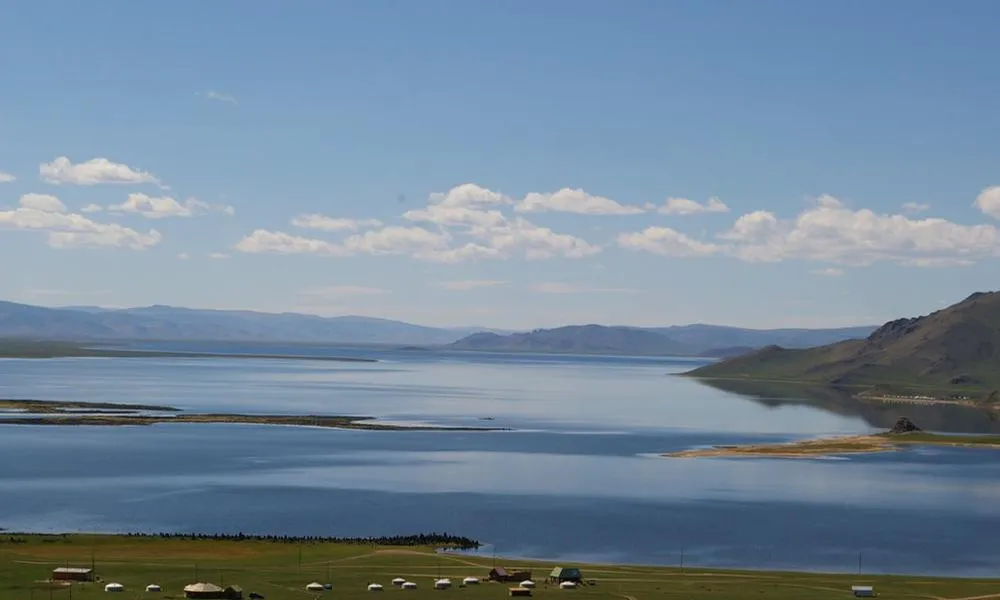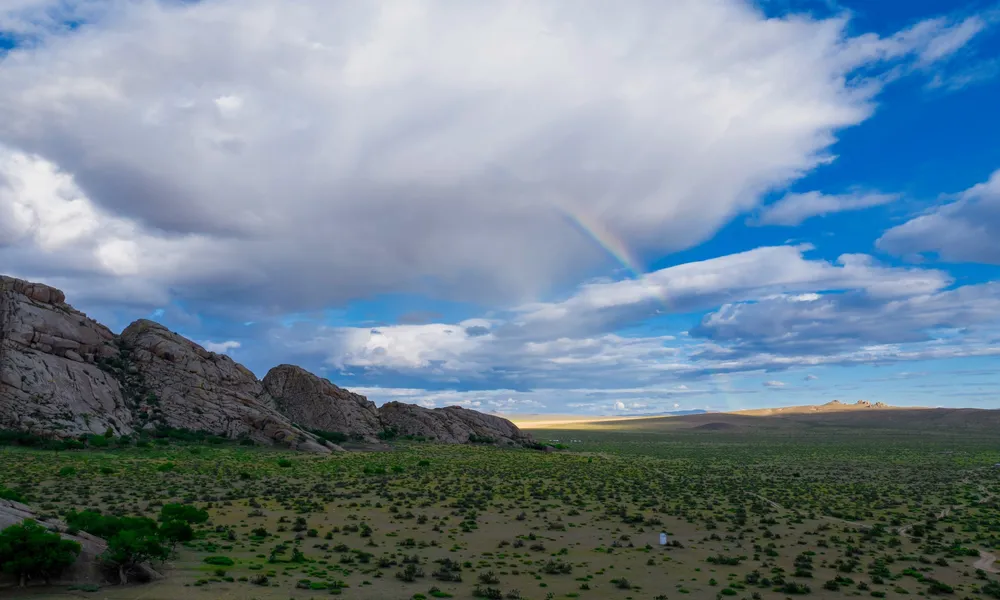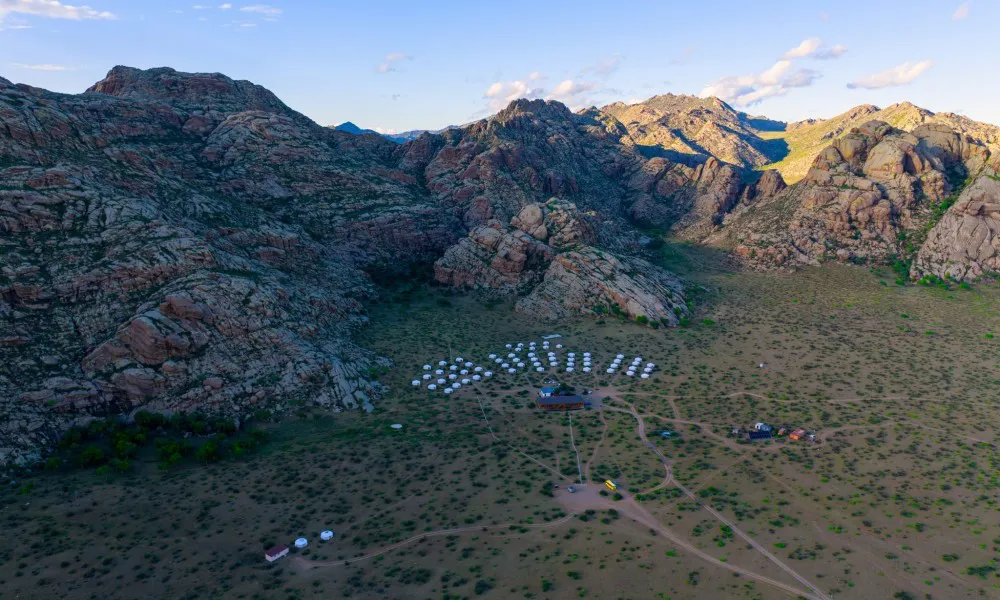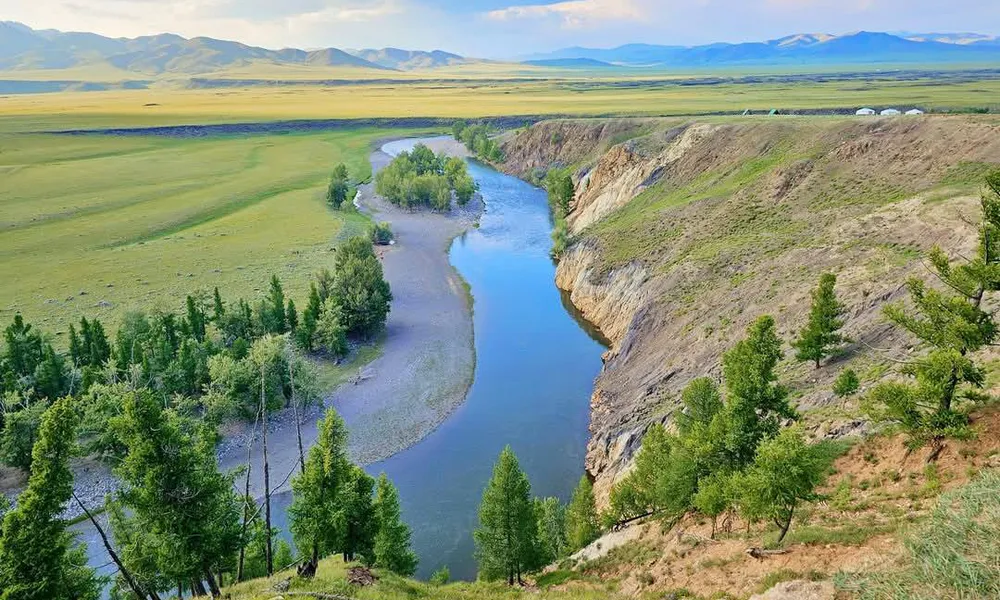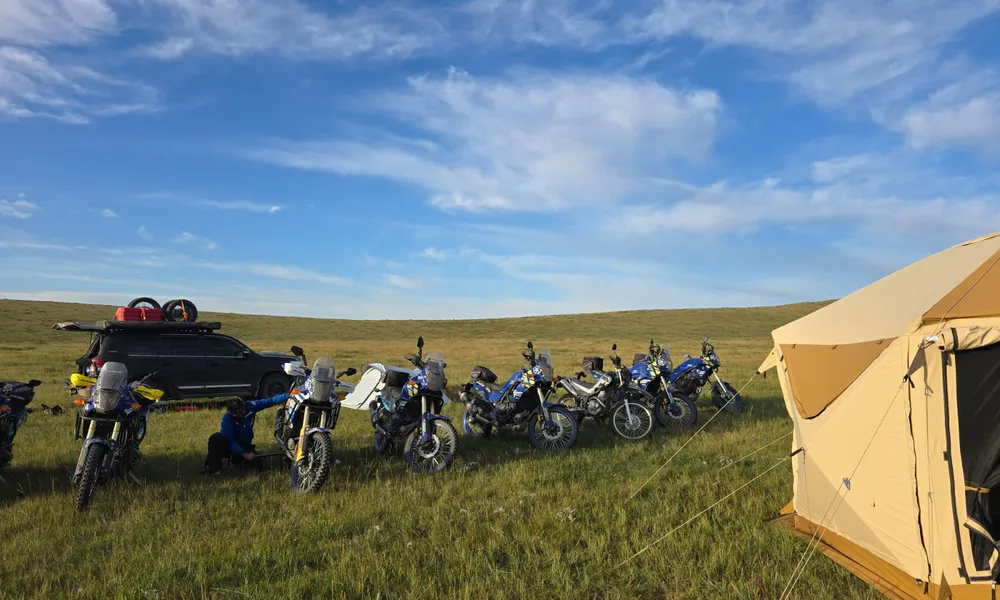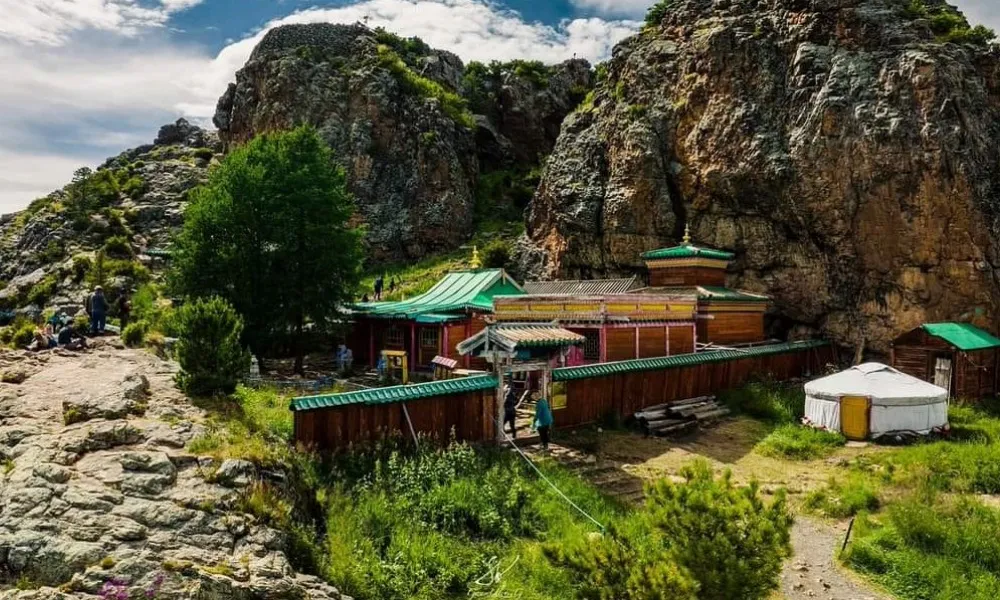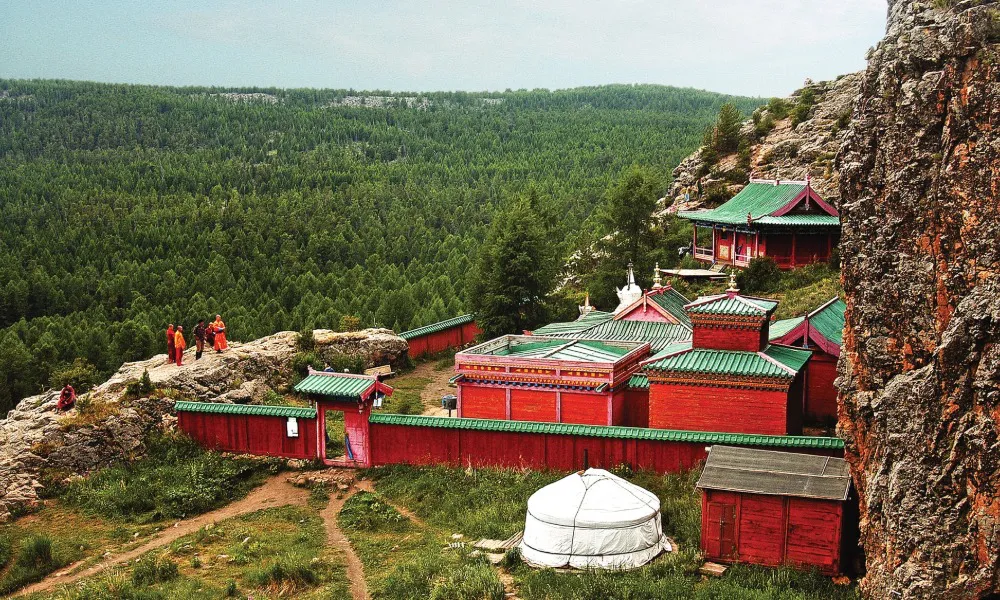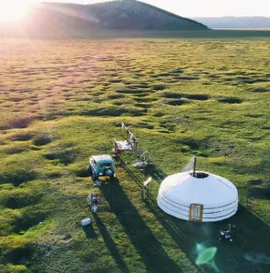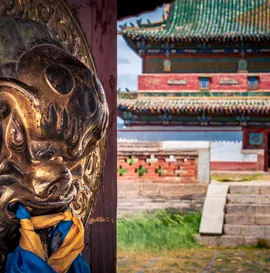Central Mongolia
In the heart of Mongolia, the land unfolds in sweeping contrasts rolling steppe, forested mountains, volcanic lakes, and golden dunes shaped by wind and time. Travel here is elemental and immersive. You ride across vast plains, soak in natural hot springs tucked in quiet valleys, hike to hidden temples perched above sacred rivers, and camp beneath skies so wide they seem to hold the silence of centuries.
Ancient ruins whisper of empires long gone. Waterfalls thunder through basalt cliffs. One moment you are galloping through alpine meadows, the next you are trekking across desert sands with camels. The terrain shifts, but the rhythm stays true: movement, connection, and awe.
This is not just a place to see. It is a place to feel where every horizon invites you deeper, every encounter leaves a trace, and every journey becomes part of the story.
Karakorum & Erdene Zuu Monastery
Karakorum and Erdene Zuu are inseparable, layers of empire, faith, and trade woven into one sacred landscape. Karakorum, once the capital of the Mongol Empire, stood at the crossroads of the Silk Road where caravans carried goods and ideas between East and West. Though the city fell, its stones remained, and in the sixteenth century those very ruins were used to build Erdene Zuu, Mongolia’s first Buddhist monastery.
Today, Erdene Zuu rises from the footprint of Karakorum, its white stupas encircling a site that once hosted royal palaces and foreign embassies. Both lie within the Orkhon Valley, a UNESCO World Heritage Site and national park that preserves not just nature but the memory of Mongolia’s imperial and spiritual legacy.
To walk here is to trace the path of khans, monks, and merchants, a place where history is not just remembered, it is built into the walls.
Elsen Tasarkhai Sand Dune
Elsen Tasarkhai is more than a desert it’s a living mosaic of Mongolia’s landscapes and geography. This long ribbon of sand lies at the meeting point of three provincial borders, making it a natural crossroads in the heart of the country. Despite its arid appearance, the land here is still fertile. Mountain streams feed shallow pools and oases, drawing migratory birds and nourishing seasonal wildflower meadows that burst into color each spring and summer.
Camels roam the dunes while horses graze nearby on green steppe. Forested slopes rise in the distance, and the nearby Ikh Mongol Mountain marks Mongolia’s exact geographic center. Locals often say this place holds the spirit of the entire country where desert, forest, steppe, and mountain, meet in one breathtaking sweep of land. It’s a landscape of contrast, abundance, and quiet wonder.
Orkhon Waterfall
Mongolia’s most powerful natural landmarks where the Orkhon River plunges nearly 20 meters into a basalt canyon shaped by ancient lava flows. Located in Orkhon National Park, the country’s third-largest, it sits within a UNESCO World Heritage landscape rich in history and spiritual depth.
The Orkhon River itself is legendary. one of the few rivers named in The Secret History of the Mongols, flowing since the time of Chinggis Khaan and still carving its path today. In winter, the waterfall freezes into a towering wall of ice, hosting annual ice climbing competitions that draw both local and international adventurers.
Khorgo-Terkhiin Tsagaan Nuur National Park
Khorgo Terkhiin Tsagaan Lake National Park is a volcanic wonderland shaped by fire, water, and time. At its heart lies Terkhiin Tsagaan Lake, formed when lava from the Khorgo Volcano—which last erupted around 8000 years ago—dammed the river valley, creating a pristine alpine lake. The lake supports a healthy aquatic ecosystem, with fish such as taimen, perch, lenok, and pike thriving in its clear waters.
Khorgo is the only fully visible crater today, but the area hides many smaller and half-formed craters now softened by grass and forest. Ancient lava flows also created caves, including the legendary Yellow Dog Hell Cave. Interestingly, the word Khorgo also refers to a fine textile used in making traditional Mongolian Deels(Traditional Costume), named so because the basalt formations resemble its rich, textured weave.
This landscape is a rare blend of basalt cliffs, alpine meadows, forested slopes, and open steppe. Fertile and full of life, it is a place where Mongolia’s geological past still shapes the present, quietly, powerfully, and beautifully.
Khugnu-Tarna Natural Area
A spiritually rich and ecologically diverse protected area in central Mongolia, anchored by the sacred Khugnu Khaan Mountain. Rising to an elevation of 1965 meters, this revered peak is one of Mongolia’s 108 sacred mountains, known not only for its spiritual significance but also as a source of numerous fresh spring waters that nourish the surrounding steppe and forest.
Its larch-covered slopes and rocky cliffs shelter wildlife such as lynx, wild boar, marmots, and a wide variety of snakes, including steppe rat snakes, halys pit vipers, and grass snakes. Nearby lie the quiet ruins of Erdene Khamba Monastery, echoing centuries of Buddhist tradition.
The Orkhon Valley National Park
A UNESCO World Heritage Site, lies at the foot of the Khangai Mountain Range, one of Mongolia’s three major mountain systems. For over 2000 years, this fertile valley along the Orkhon River has been a cradle of nomadic civilization, home to ancient capitals, sacred sites, and royal tombs.
Its landscape blends steppe, volcanic cliffs, waterfalls, and rich riverbanks. The dramatic Orkhon Waterfall, formed by ancient lava flows, is a central feature. Wildlife includes deer, foxes, marmots, and diverse birdlife.
Once part of the Silk Road, the valley served as a vital crossroads of trade and culture. Historic sites include Karakorum, the 13th-century Mongol capital, and Tuvkhun Monastery, a forested mountain retreat founded by Mongolian first buddhist saint Zanabazar for meditation and sacred art.
Tuvhun meditation temple
A secluded spiritual retreat perched at 2,600 meters atop Shireet Ulaan Uul in central Mongolia. Visitors reach it by hiking about 5 kilometers through dense forest, a peaceful ascent that takes 1.5 to 2 hours and feels like a pilgrimage in itself.
Founded in 1648 by the 14-year-old Zanabazar, Mongolia’s first buddhist saint, the site began as a meditation cabin and evolved into a creative sanctuary. Here, Zanabazar spent decades crafting art, developing the Soyombo script, and deepening Buddhist practice.
The monastery’s architecture blends Mongol, Tibetan, and Chinese styles, built without nails by master carpenters. Behind it lies the Womb Cave, a sacred site symbolizing spiritual rebirth, with gender-specific paths and ritual cairns nearby.
Though destroyed in 1688 and again during the 1930s purges, Tuvhun was restored in the 1990s. Today, lamas have returned, ceremonies resume, and original temples and stupas still stand. In 1996, UNESCO recognized it as a World Cultural Heritage site.


